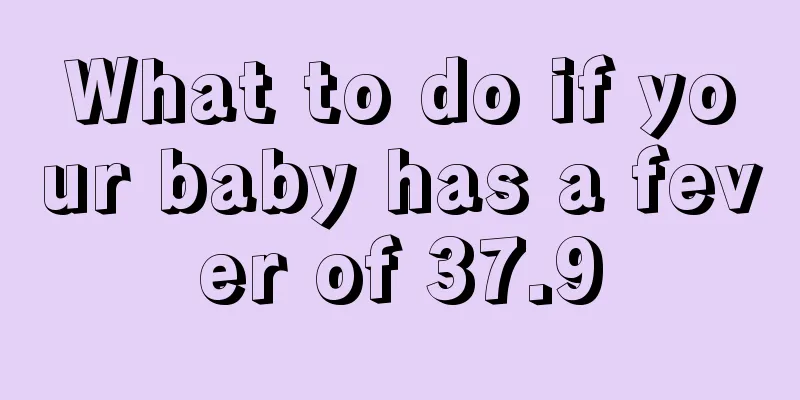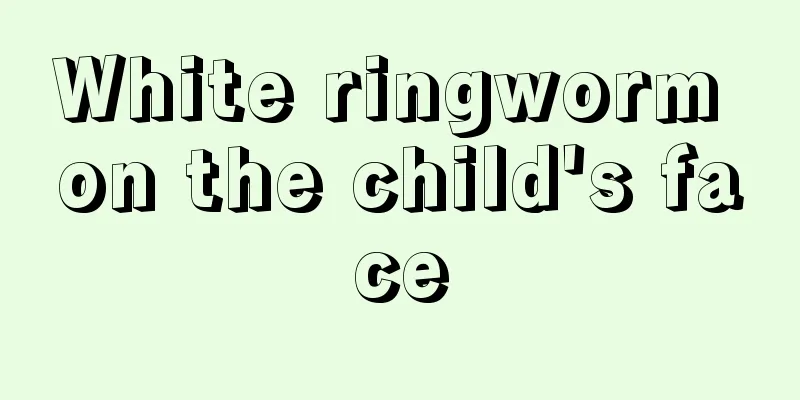Nine month old baby with stuffy nose

|
Children are very young and do not know how to clean their noses, which often causes snot to get stuck in their noses. When the snot dries, it turns into nasal mucus, which gets stuck in the nose and causes nasal congestion. In addition, some children have recently caught a cold, which is also the main cause of nasal congestion. The treatment of nasal congestion mainly uses some traditional family methods, which avoid taking medicines and injections and are more suitable for children with poor resistance. Types of baby stuffy nose The degree of nasal congestion can be mild or severe, and can be unilateral or bilateral. If the patient has severe bilateral nasal congestion, he or she is often accompanied by mouth breathing and snoring at night. Some nasal congestion symptoms appear and disappear from time to time, which we call intermittent nasal congestion; some are blockages of the left and right nasal cavities alternately, which is called alternating nasal congestion; some nasal congestion symptoms do not disappear for a certain period of time and persist, and the degree of nasal congestion is sometimes light and sometimes severe, which is called persistent nasal congestion; there is also a type of nasal congestion in which the symptoms do not disappear and the degree gradually worsens during a long course of illness, which is called progressive nasal congestion. Treatment for nasal congestion General treatment 1 If the blockage is caused by nasal secretions, you can use a cotton swab to gently roll out the secretions. If it is dry secretion, you should first apply some ointment or eye ointment, or use a cotton swab dipped in water and drop it into the baby's nostrils. Be sure to use an appropriate amount to make it soft and no longer stick to the mucous membrane, then use a cotton swab to pull it out; you can also let the baby cry for a while, wait for the tears to soak the nasal crust and soften the nasal crust, and then gently pull out the nasal crust with your hands. 2 Apply a warm towel to the nose. When the nasal mucosa is exposed to heat and shrinks, the nasal cavity will be more unobstructed and the sticky nasal mucus will be easier to hydrate and flow out, which can relieve nasal congestion. Be sure to be gentle when applying heat. 3 Mothers can try to change the baby's position: when the left side of the nose is blocked, lie on the right; when the right side of the nose is blocked, lie on the left, which can relieve the nasal congestion. 4. Massage of nose acupoints: Let older children sit down (infants and young children lie flat), use the thumb and index finger to massage both sides of the nose from top to bottom for 3 minutes, then rub the Yingxiang points (on both sides of the nose) for 1 minute. When the nasal cavity feels hot, the breath will be unblocked. Do this every 2 to 3 hours to effectively relieve nasal congestion. 5 When a baby has a stuffy nose, he often cries non-stop. At this time, you can hold the baby upright, which can also relieve the stuffy nose and make the baby fall asleep more easily. 6 When nasal congestion affects your child's sleep, you can raise the head 30 degrees to relieve the symptoms. 7 Pay attention to indoor ventilation, try to maintain the room temperature at 24~26℃ and the humidity at 60%~70%. When the weather is cold, you can use air conditioning or heater to change the room temperature to relieve your child's symptoms of nasal congestion and runny nose. 8 Older children should be asked to blow out their own mucus when they have it in their nose. To blow your nose correctly, press one nostril tightly and gently blow out the secretions from the opposite nasal cavity. This can reduce the accumulation of nasal secretions in the nasal cavity and cause nasal congestion. 9 When infants and young children have nasal congestion, physiological seawater nasal spray can be used to reduce nasal mucosal edema. In addition to physiological seawater nasal spray, older children can also use nasal mucosal astringents such as oxymetazoline hydrochloride nasal spray. The use time should not be too long, generally not more than 5 days. In most cases, a baby's stuffy nose is not a serious problem. If the above methods fail to improve the symptoms, especially if the stuffy nose lasts too long and even affects the baby's sleep, feeding and mental state, parents should pay attention to it. It is recommended to seek help from an otolaryngologist for further examination, so as to diagnose the cause and provide treatment as soon as possible. Usually, you should pay attention to rest, exercise more, and supplement nutrition to enhance your body's resistance to disease. |
<<: One-year-old baby walks with his feet a little crooked
>>: Why does a child have a fever but his body is hot but his hands and feet are cold?
Recommend
What vegetables can children with renal failure eat?
Although the living standards are constantly impr...
What is causing children’s gray hair?
Speaking of white hair, many people will think of...
What to do if your child has freckles on his face
Freckles are a skin disease that we are very fami...
Common precautions for children rafting
We also know that young people in the 21st centur...
What are the early symptoms of hypothyroidism in infants?
Babies' physical fitness is not like that of ...
What can’t babies eat if they are allergic? Don't touch these foods
The baby's body is relatively fragile and its...
How to treat coffee spots in children
Café au lait spots are a skin disease. The name a...
What are the benefits of baby massage?
Infant massage is essential. It is a medical meth...
What to do if a two-year-old child has a fever
When the baby has a fever, our parents are the mo...
What are the Chinese patent medicines for strengthening the spleen and stomach in children?
Now that summer has arrived, many children like t...
What kind of soup is nutritious for children?
Children usually need to eat something to nourish...
How to deal with endocrine disorders in children
Nowadays, many women will have endocrine disorder...
How to take care of a child with a cold and fever
Children are the largest group suffering from col...
What to do if a 7-year-old child has a hunchback?
In the eyes of parents, it is very common for chi...
What to do if your child has red anus
Anal redness is a common problem among children, ...









